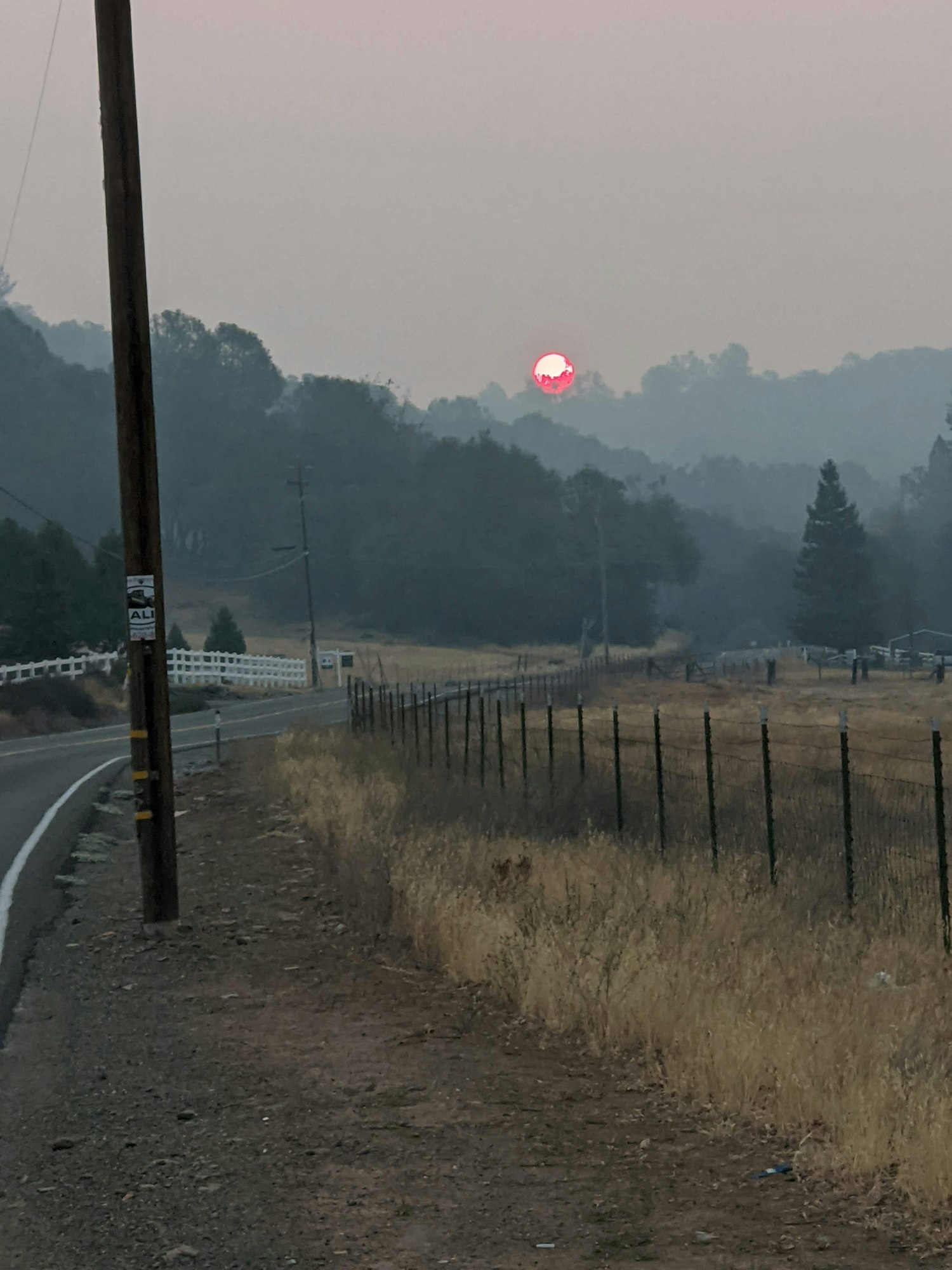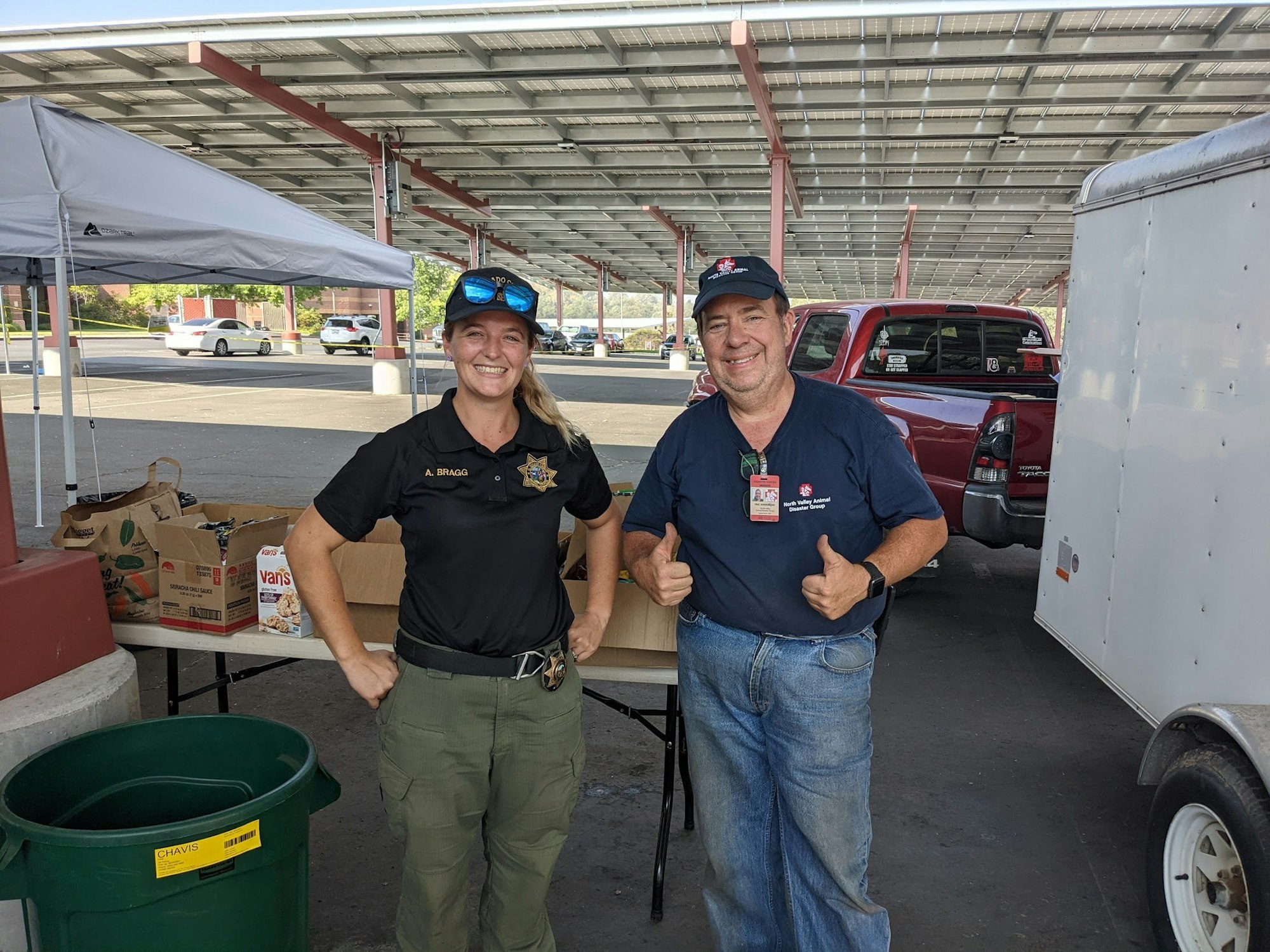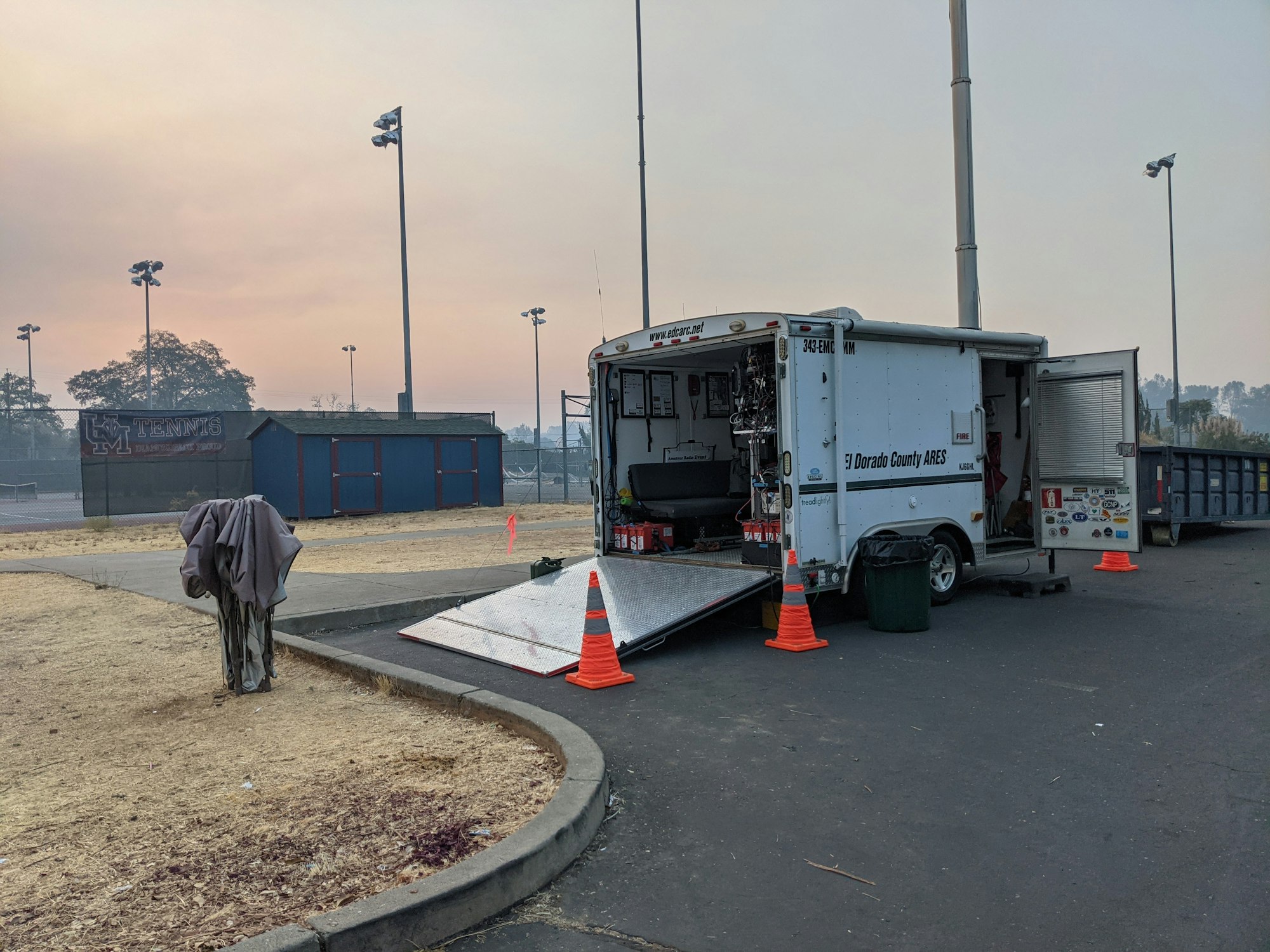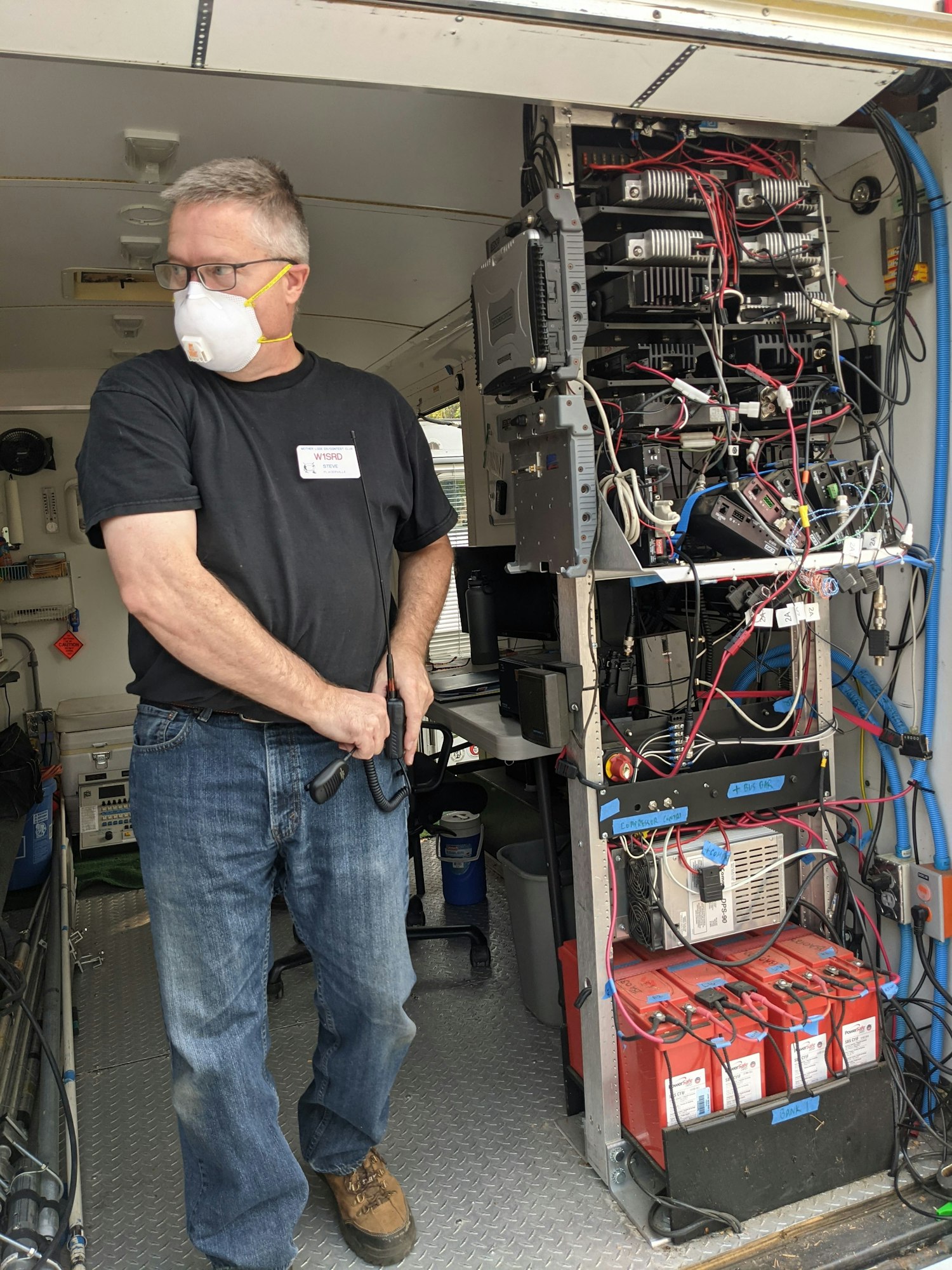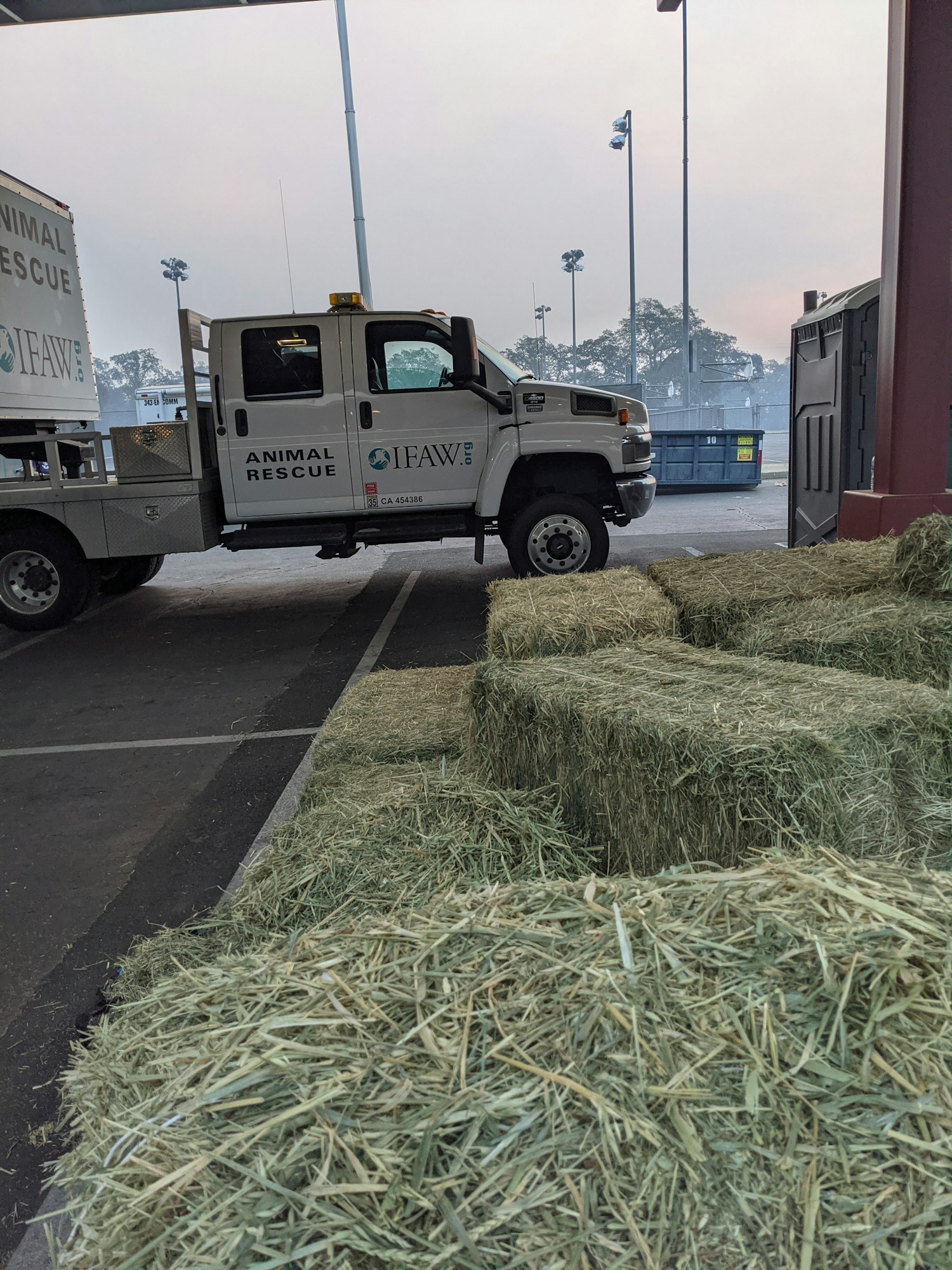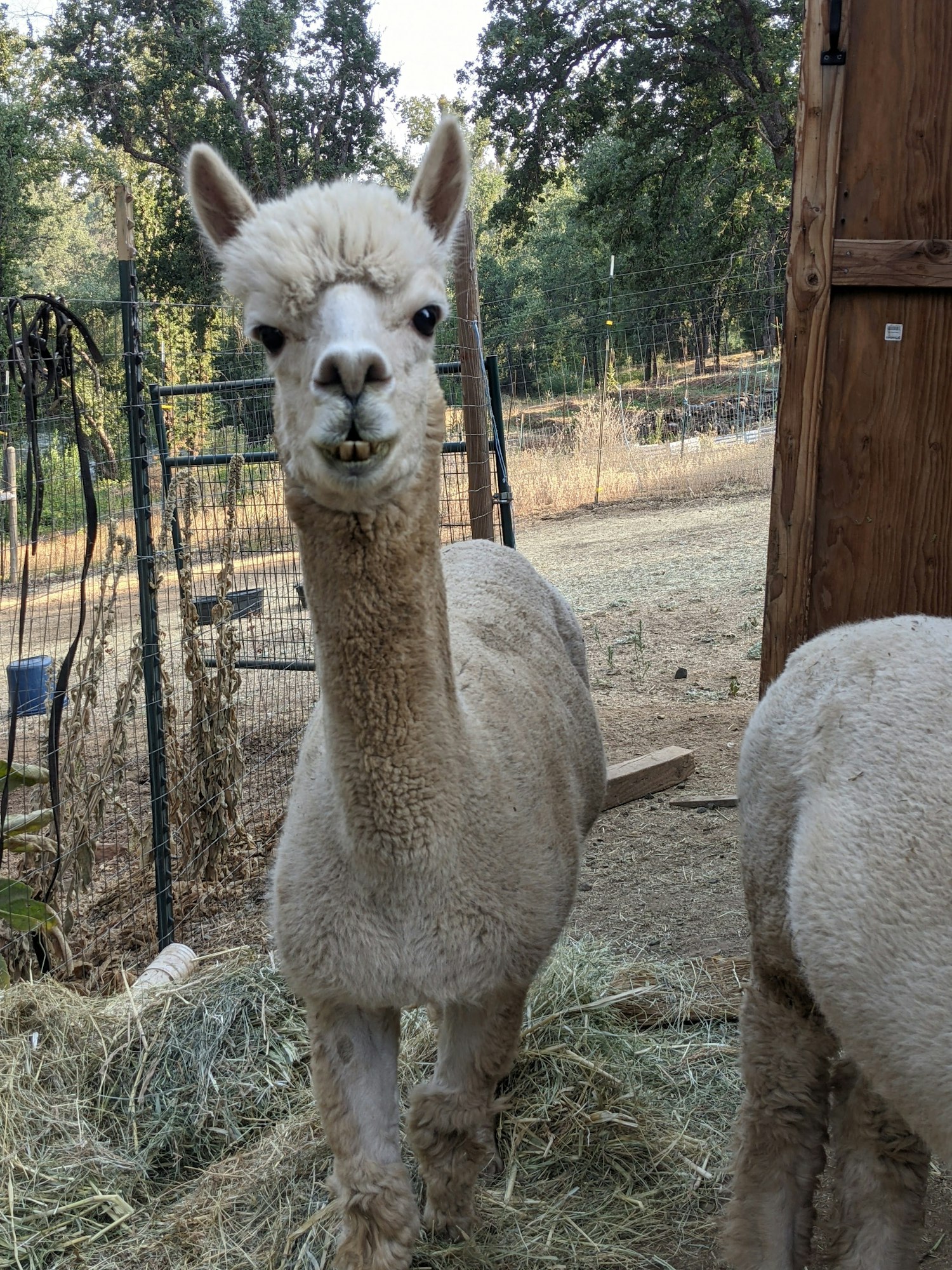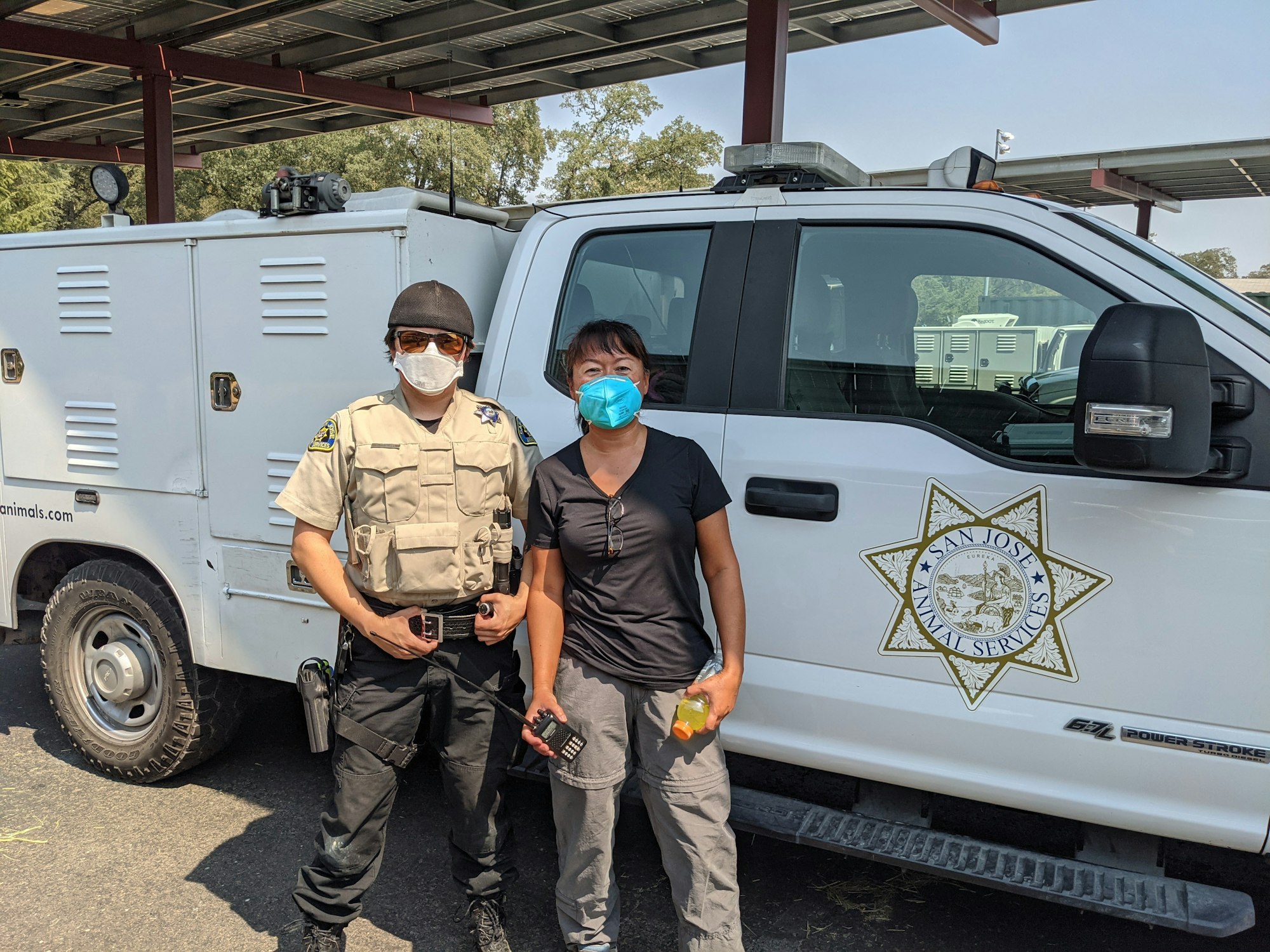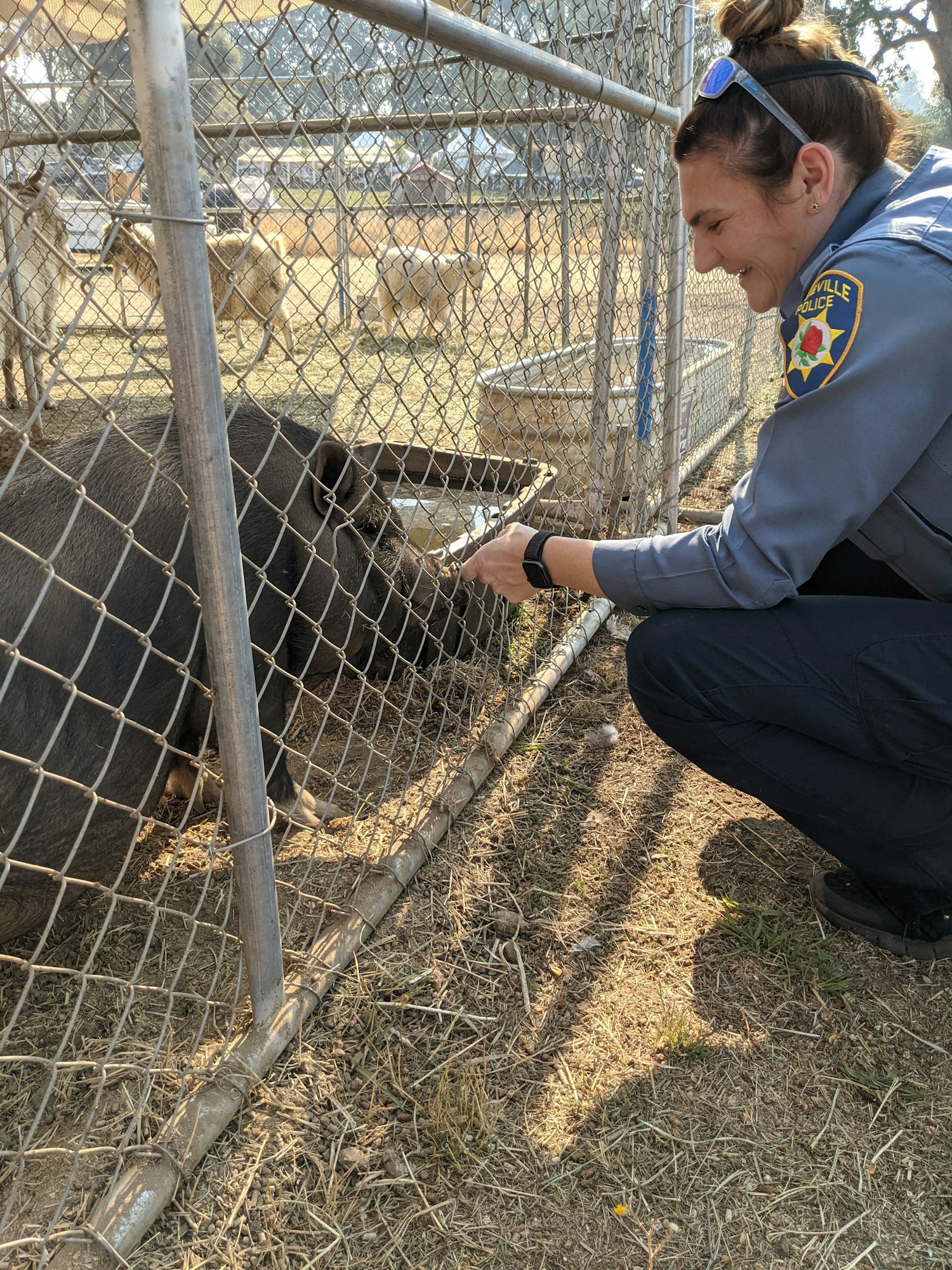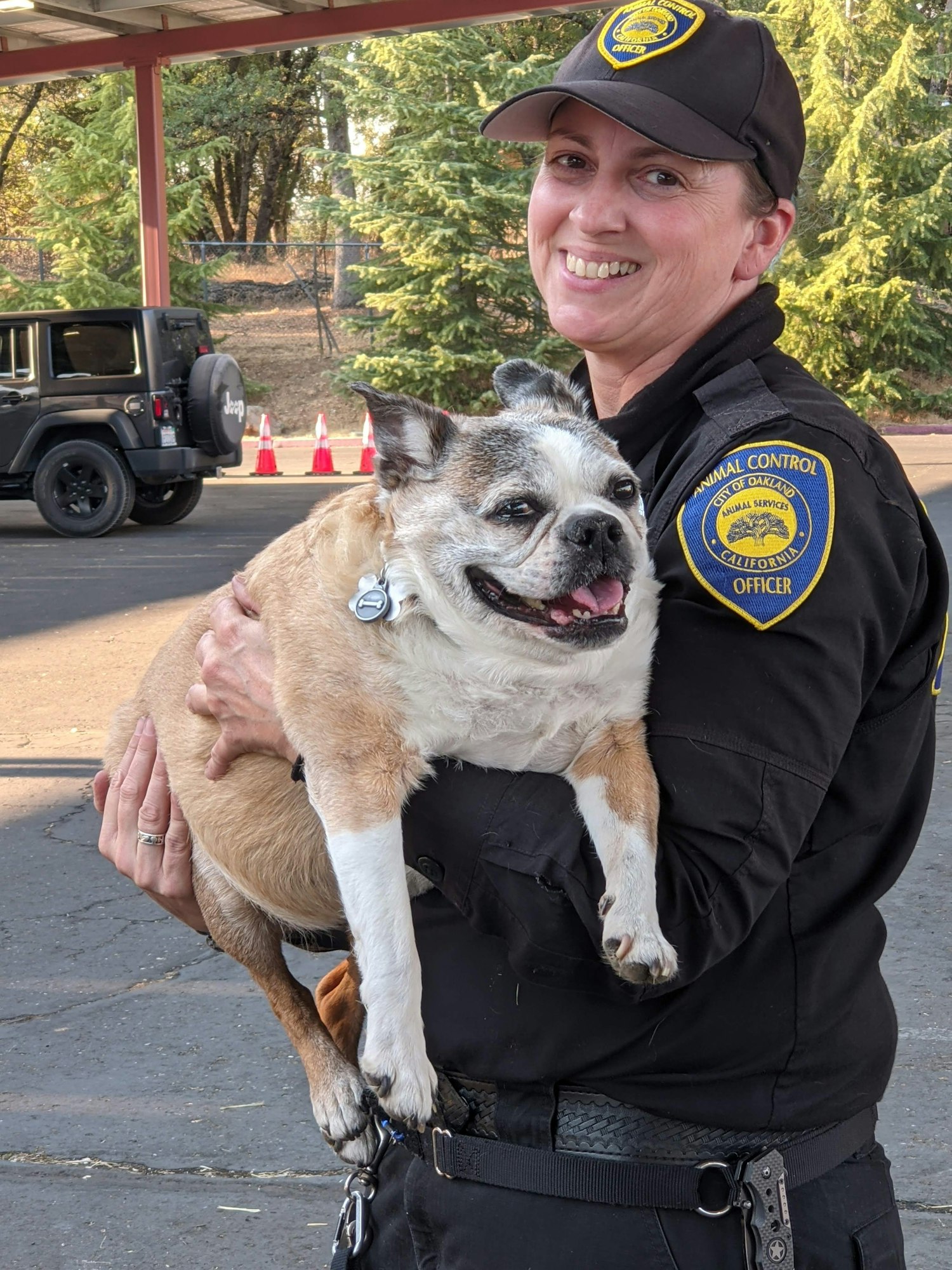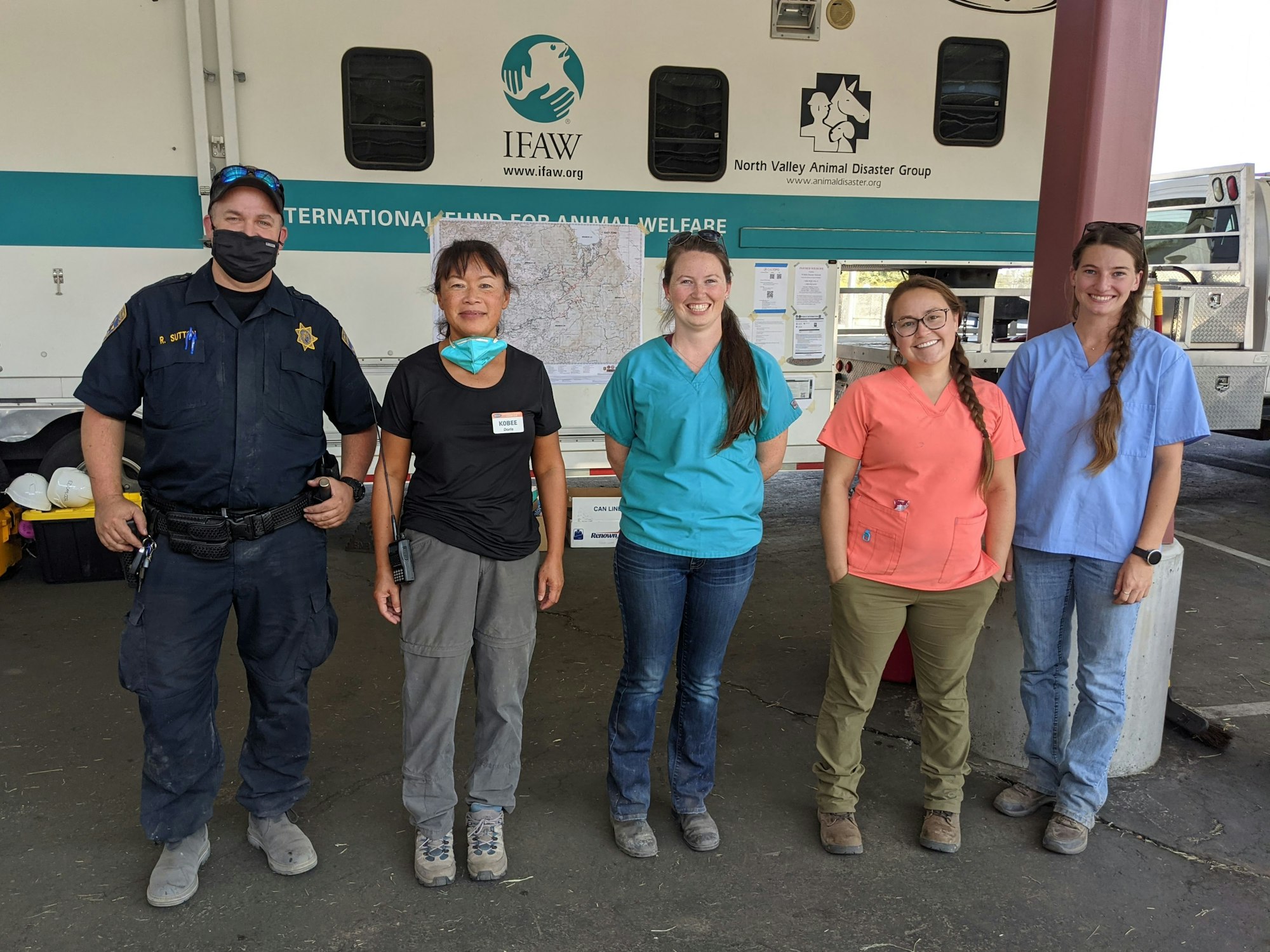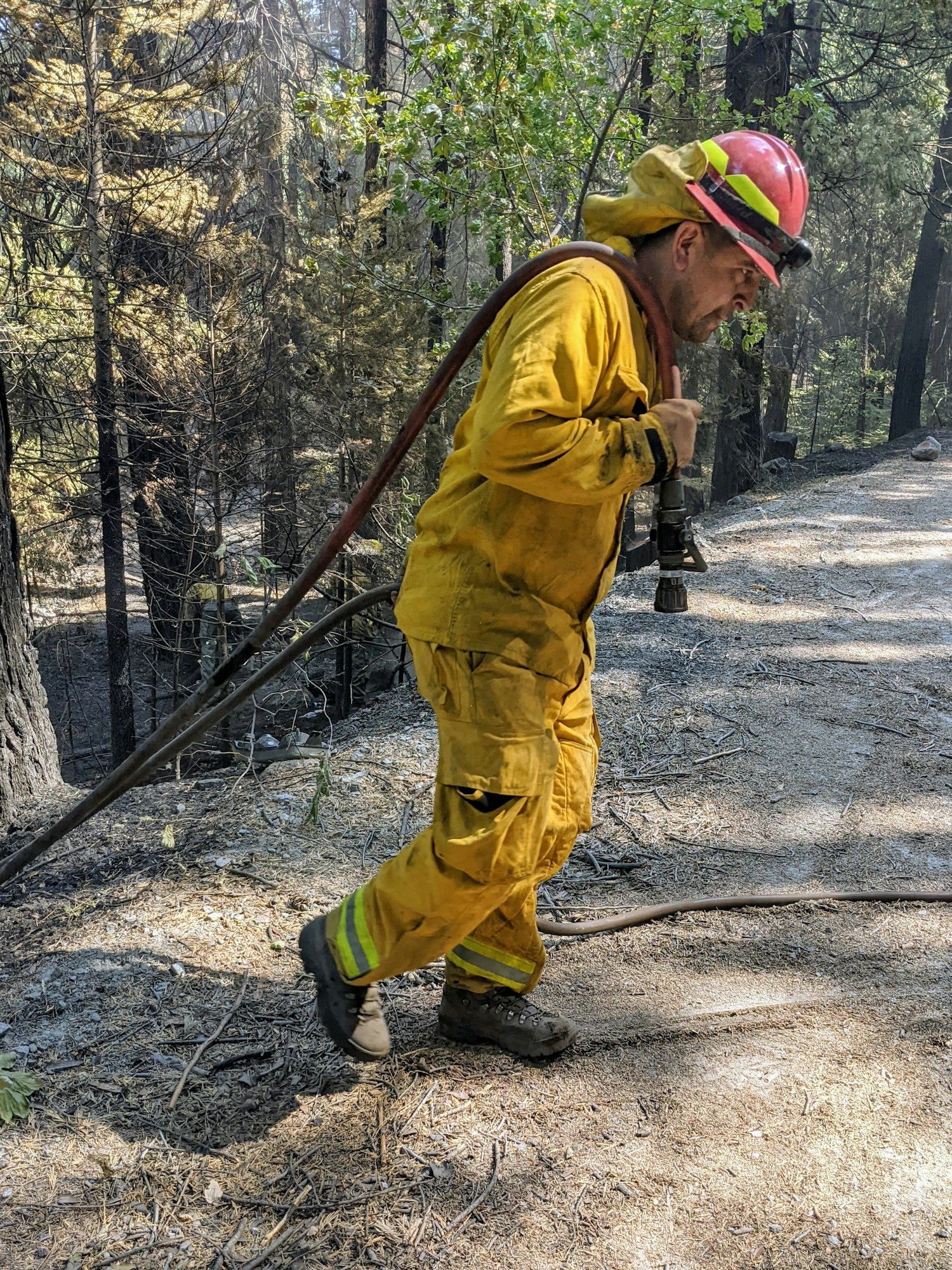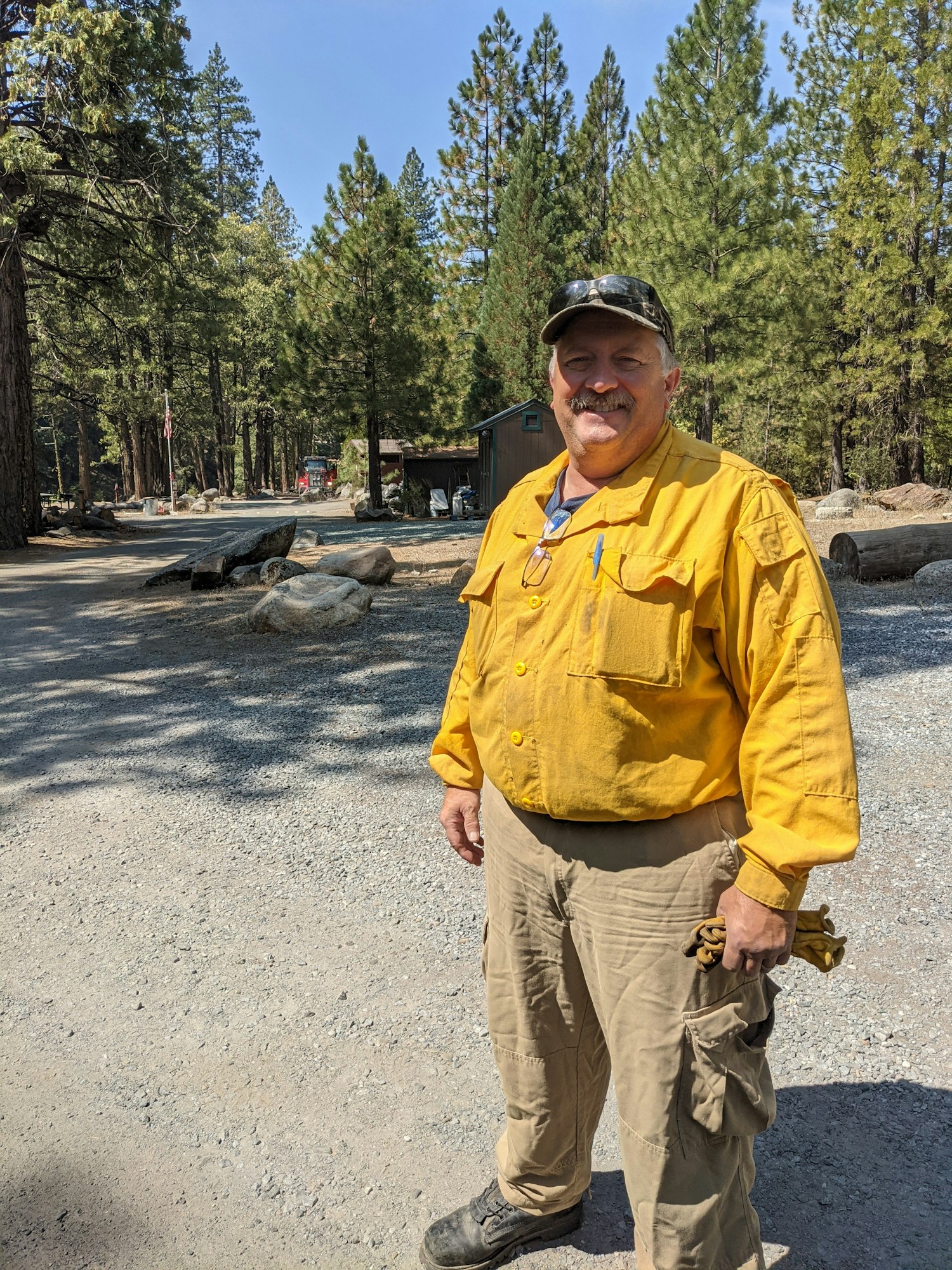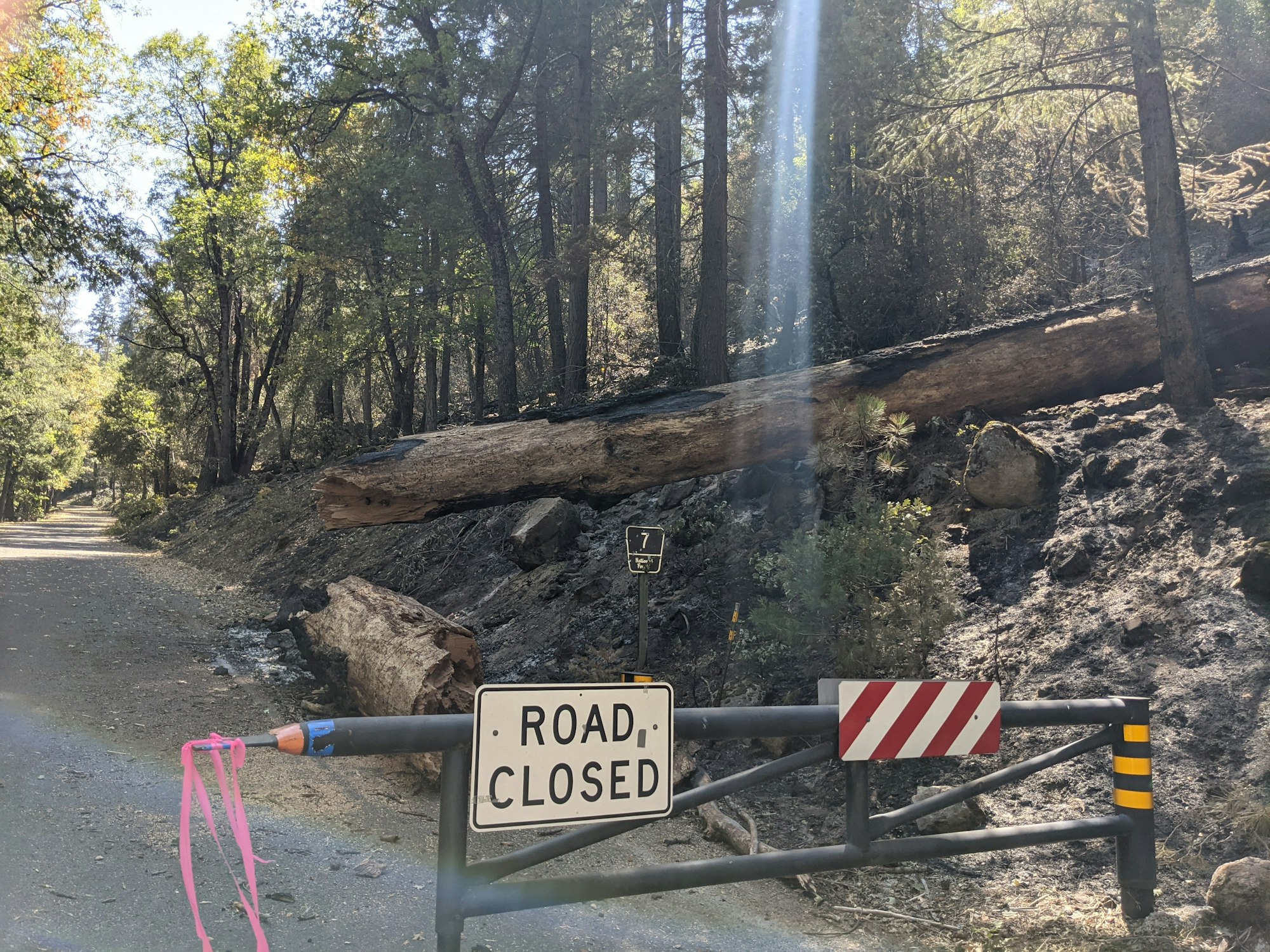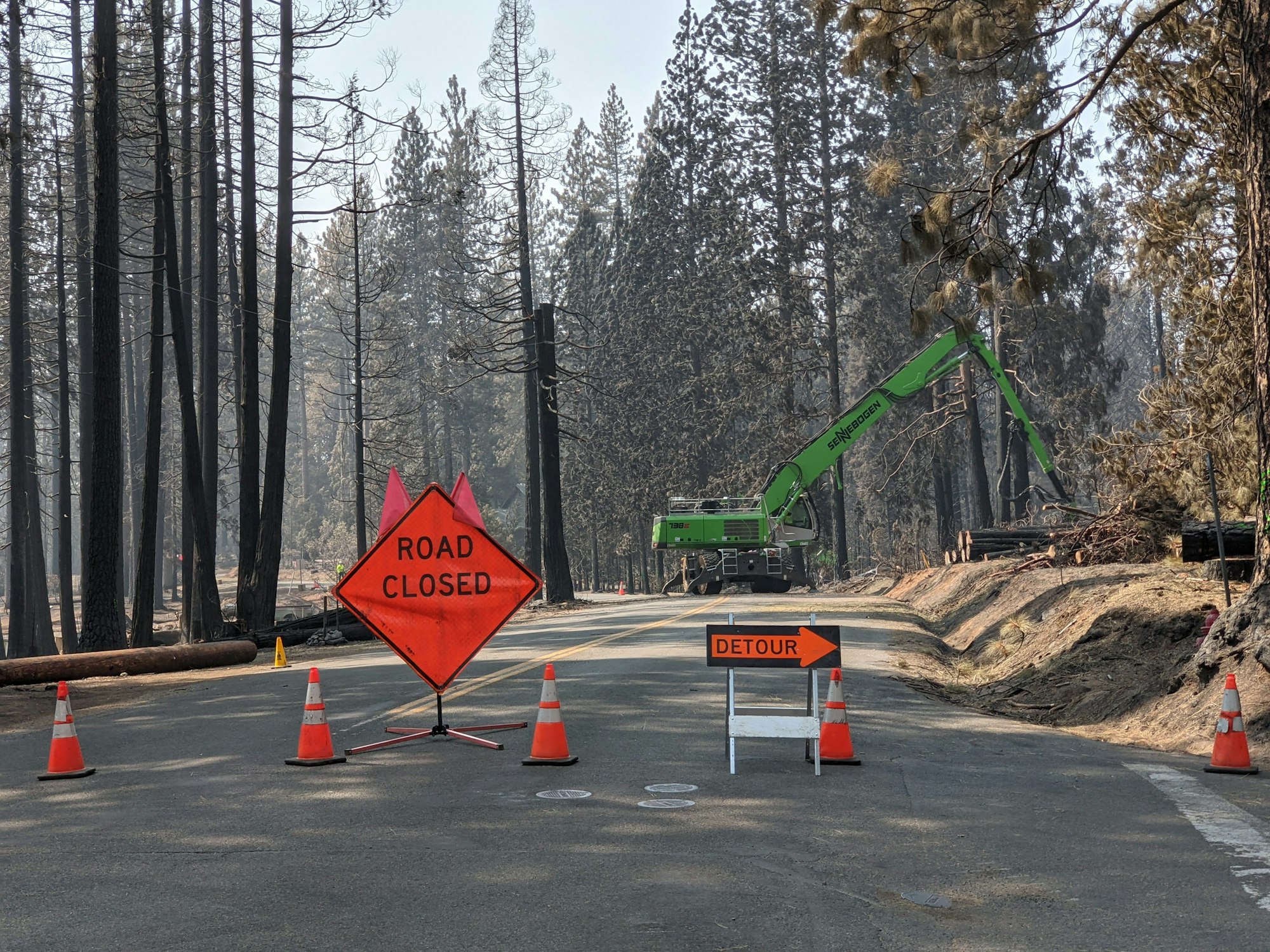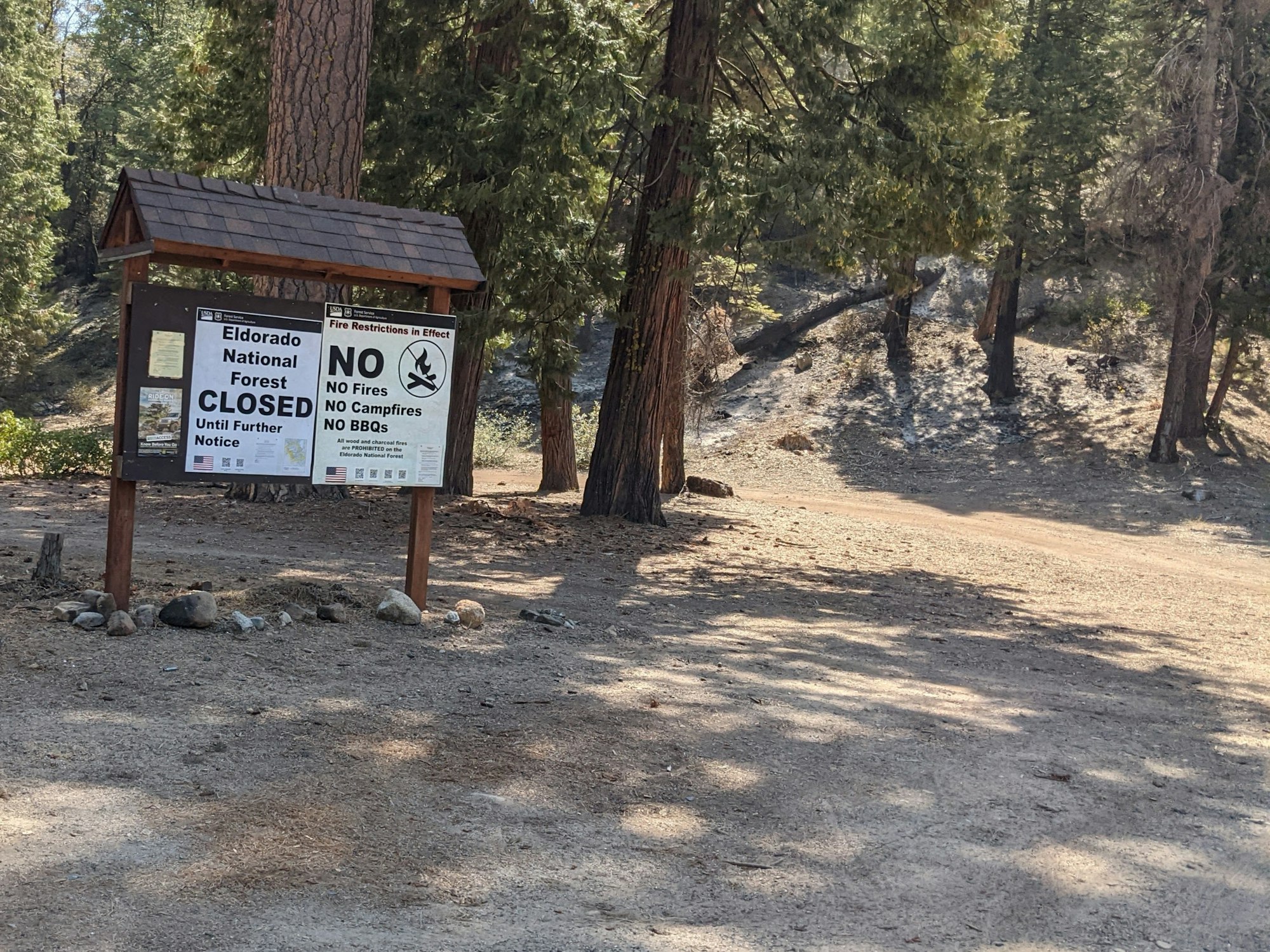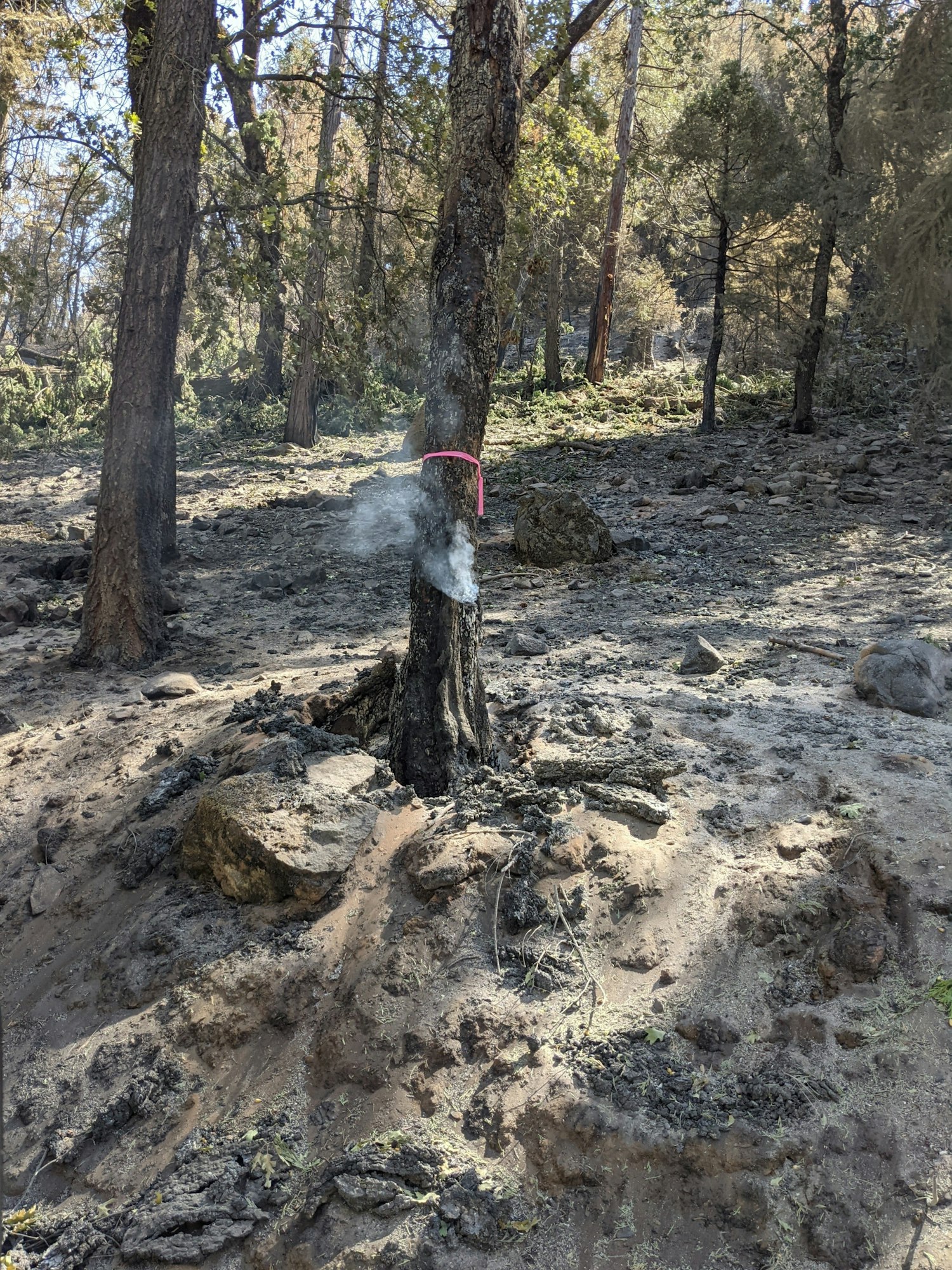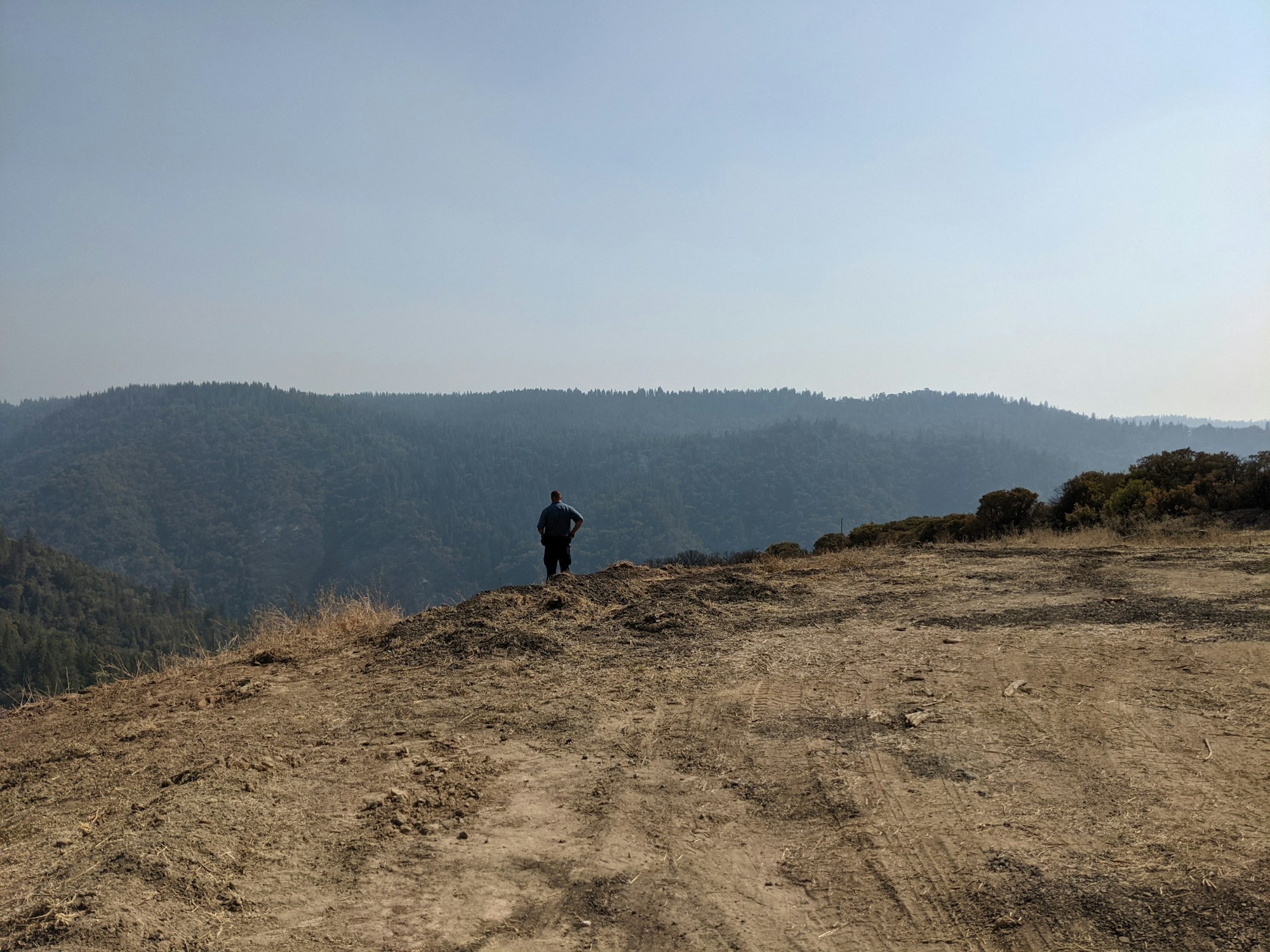Caldor Fire Animal Rescue: An Amateur Radio Emergency Services Perspective

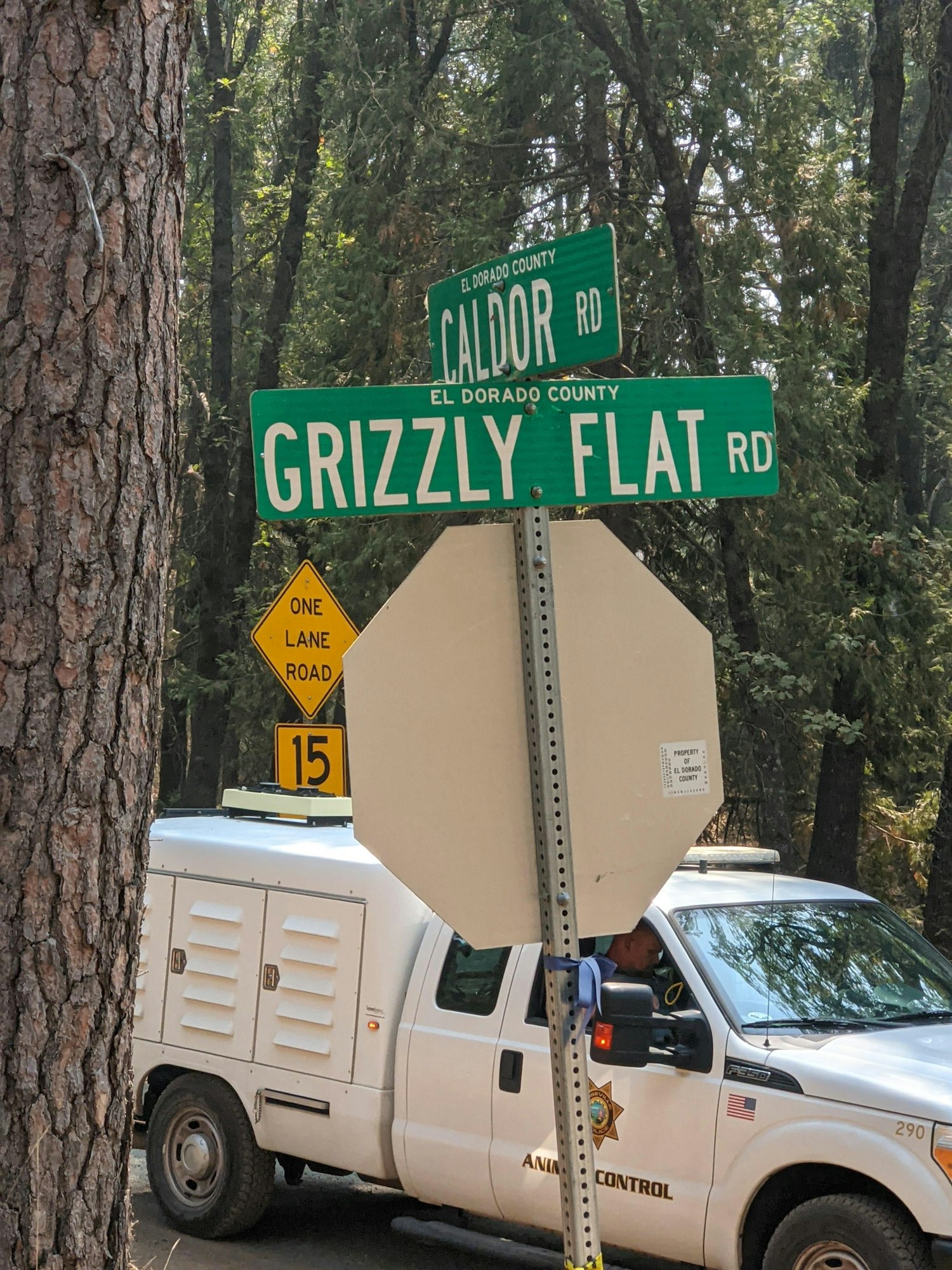
During the 2021 Caldor Fire, the El Dorado County Amateur Radio Club’s (EDCARC) Amateur Radio Emergency Services (ARES) was activated by Frank Yost (KA6GWY), then Communications Manager of El Dorado County Sheriff’s Office (EDSO), to provide dispatch and field radio communications support while accompanying Animal Control Officers (ACO) and vets into Caldor Fire evacuation zones to rescue and evacuate animals in places with little to no cell coverage.
The Caldor Fire was the largest, most destructive fire in El Dorado County’s history that decimated the town of Grizzly Flats and triggered evacuation orders that displaced over 53,000 people from their homes in 3 counties, many who had to flee quickly with no time to evacuate their domestic animals and livestock.
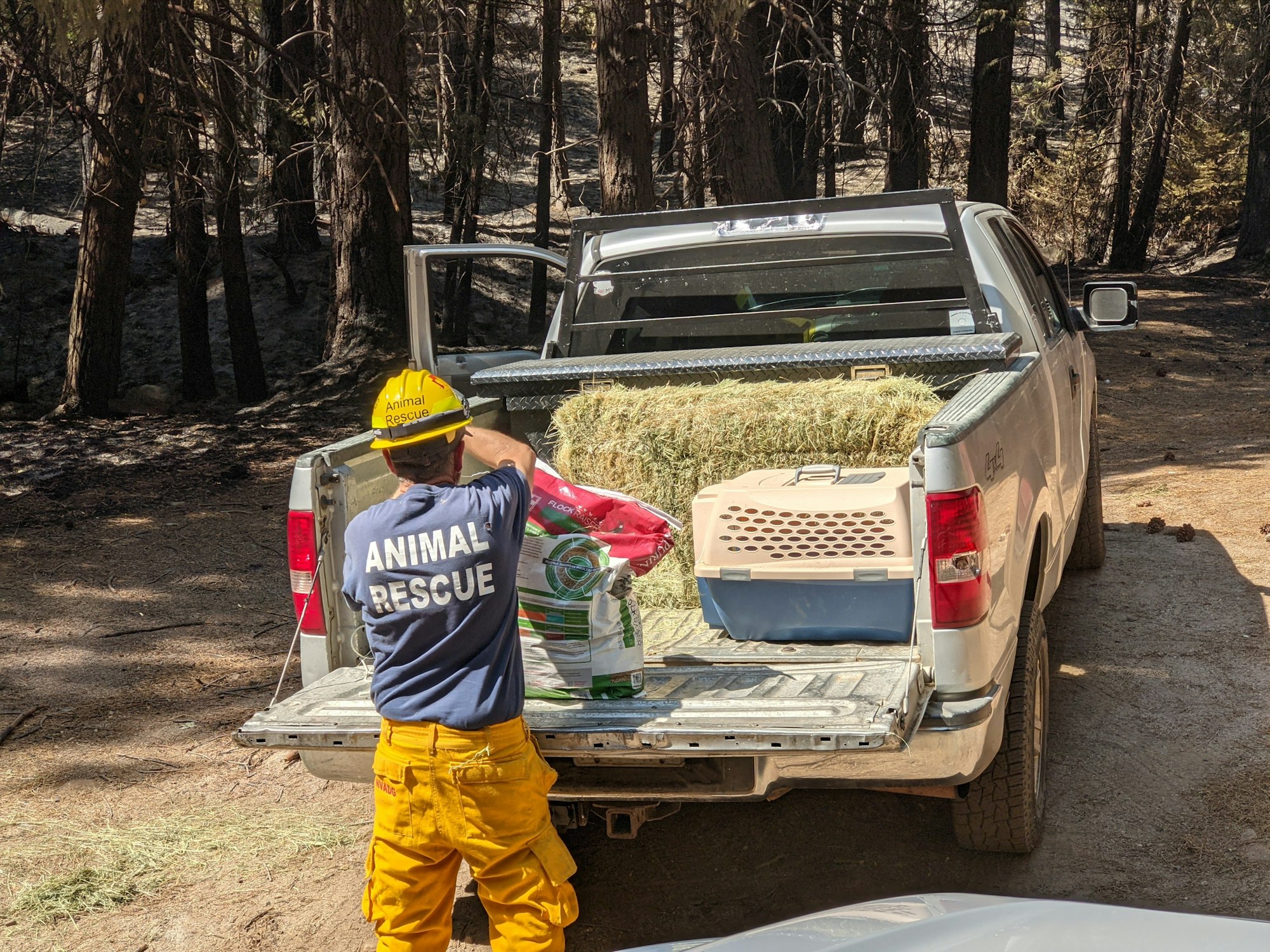
El Dorado County Animal Services partnered with North Valley Animal Disaster Group (NVADG) to quickly stage a Command Center at Union Mine High School as the base for animal rescue operations. Many counties across Northern and Southern California sent volunteer animal control officers to help.
Under the expert leadership of Bob Hess (W1RH), who serves on the Board of the Community Emergency Radio Association (CERA) as Chair & President and on EDCARC’s Board as a Director, over 30 EDCARC ARES licensed and trained volunteers participated as Net Control Operators (radio dispatch) and Field Operators.
A typical day of animal rescue operations consisted of:
- Morning briefings at 7:30am to share latest updates on the fire, review safety instructions and field check-in protocols.
- Pairing an EDCARC ARES member to each animal rescue team.
- Receiving the day’s service activity calling cards for each team.
- Calling animal owners listed on activity cards to clarify any directions, entry and access to their property, number and types of animals, and animal care instructions.
- Loading the necessary animal food and water supplies into vehicles.
- Packing a human lunch to eat on the go if the number and location of the day’s calls make it impossible to return to eat lunch at staging.
- Checking into Net Control:
- at least every 30 minutes
- to indicate transit from each departing location and to next target destination
- to relay the assigned activity number, specific types and number of animals being evacuated, and to confirm transport instructions and addresses of animal shelters or holding areas
- to ask any questions that need to be clarified by the ACOs in charge at Command Center
- Visiting each property to either evacuate animals or provide feeding and care based on the owner’s request and jotting a summary of the visit on the visit notices posted on the door or garage at the owner’s property.
- Filling out ICS forms to progressively log activities for each visit in an Activity Log ICS 214 form for each team member and filling out the Assignment List ICS 204 form for each team at the end of each day.
- Returning to staging ideally by 6PM so all field personnel can be accounted for.
- Conferencing each evening by ACO leads and Bob Hess (W1RH) to plan the animal rescue personnel available and EDCARC ARES members needed for the next day’s operation.
Doris Wong (K0BEE), CERA’s Digital Communications Director who was also a Caldor Fire EDCARC ARES Field Operator, offers the following tips for ARES members operating under similar field operations:
- Prepare for exhausting 12 hour shifts with intense heat and smoke
- Stay hydrated and nourished, pack snacks and liquids in case you have to skip lunch
- Pack and diligently wear N95 masks, wear your ARES name badge, long pants, and thick soled shoes
- Be prepared to drive your own car (ideally 4WD with high clearance) over rough, rutted terrain
- Plan for contingencies, e.g. pack redundant radio gear, carry paper and extra pens, etc.
- Be concise with all on air radio exchanges, develop a consistent cadence when communicating to Net Control
- Take the opportunity to mutually learn from others Amateur Radio Operators or rescue personnel in the field
- Document lessons learned and freely share your experiences with others to help prepare for the next ARES call to action
If you would like to hear a presentation about Caldor Fire Animal Rescue experiences from an ARES perspective or animal rescue lessons learned for community residents, please reach out to CERA using this Contact Us form.
Huge thank you to the EDCARC ARES team members listed below who worked 12+ hour shifts to maintain continuous contact with animal rescue workers to keep them safe.
- Communications Operational Leads - Frank Yost (KA6GWY), Bob Hess (W1RH).
- Net Control Operators - Doris Wong (K0BEE), Jay Harmor (KE6GLA), Jeremy Dean (W6TKD), Jordon Heichman (WC6J), JR Harmon (KN6LBP), Mike Sumersille (N7MSS), Nancy Harmor (KG6PNP), Steve Dyer (W1SRD), Tony Miller (W6QA).
- Field Operations - Al Lamoreaux (WQ6E), Amir Larian (N6ADL), Brenda Johnson (KK6PPP), Cliff Olmstead (WA6YZG), Dale Dennis (KJ6HHY), Doris Wong (K0BEE), Jay Harmor (KE6GLA), Jeremy Dean (W6TKD), Joe Pistritto (N3CKF), Joel Wiley (WB6GUY), Jordon Heichman (WC6J), Matt Silveira (KN6MXU), Michael Joseph (KK6ZGB), Michael Picco (K6MLE), Shannon Lile (K6TNY), Steve Dyer (W1SRD), Thomas Spring (KN6MJB), Tom Booze (K6TFB), Tom Newman (NN6H), Tyler Laursen (K6TLR).
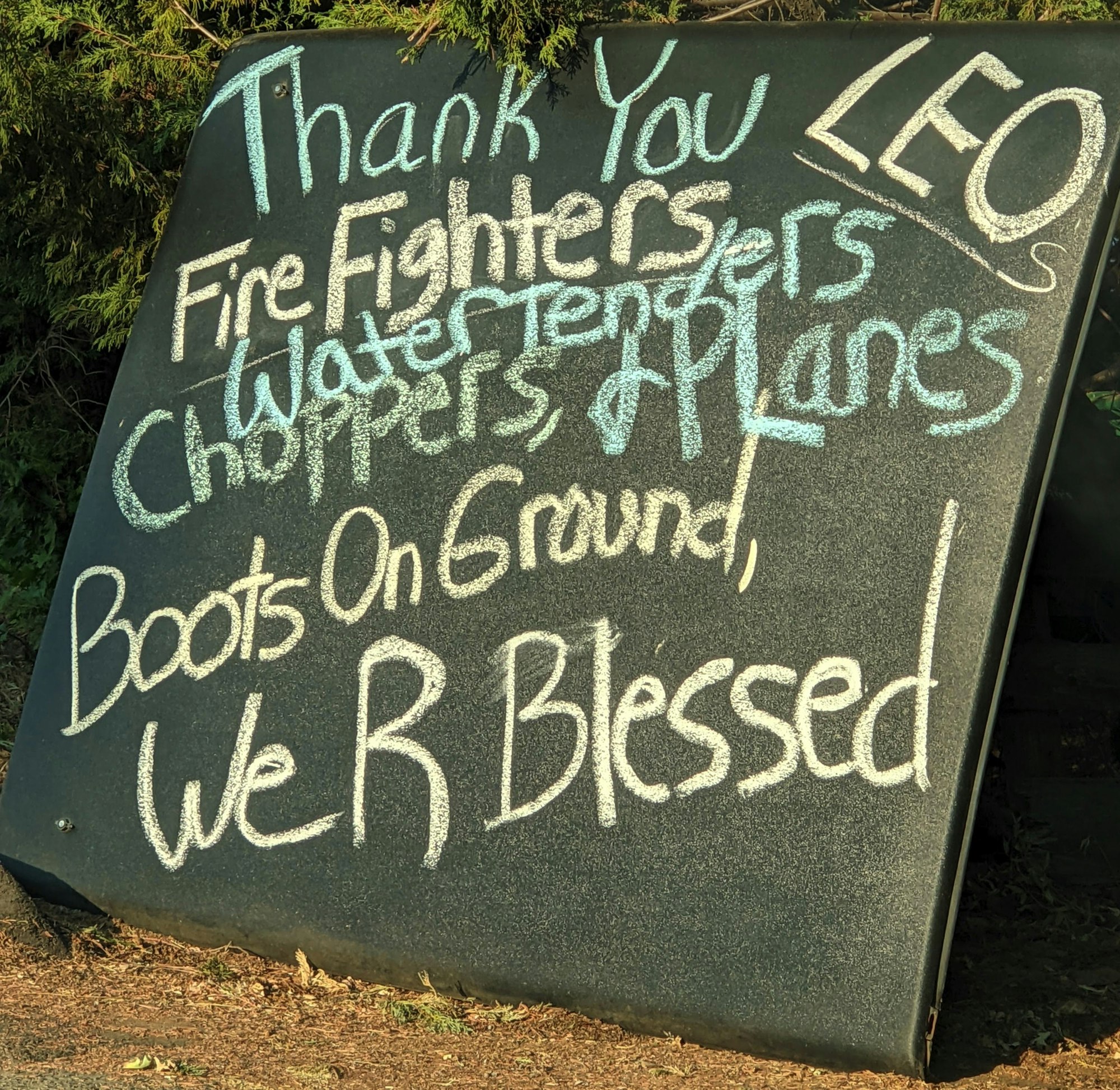
CERA and EDCARC would like to thank all the agencies we worked with to provide our ARES members an opportunity to assist with emergency communications and animal rescue. It was our pleasure to serve you during the unfortunate circumstances of the Caldor Fire and we are standing by if you should ever need our assistance in the future for emergency and non-emergency events.
